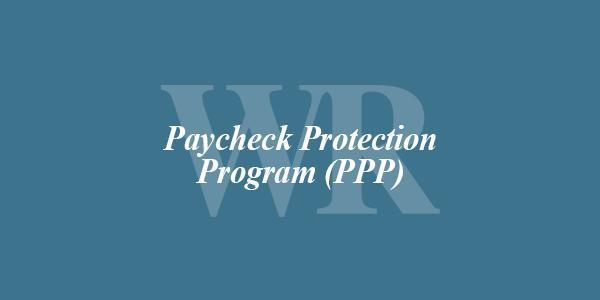
HHS Provider Relief Fund Phase 2 General Distribution Now Accepting Additional Applicants
September 15, 2020
SC MGMA Fall Webinar Series begins Sept. 2nd
September 15, 2020PPP Update- Updates on Owner-employee compensation and nonpayroll costs

On Monday the US Department of the Treasury and Small Business Administration released a new interim final rule dealing with treatment of owners and forgiveness of certain nonpayroll costs. Below is a summary of what is in this new guidance.
Owner-employees Subject to Compensation Cap Rule Defined
Loan forgiveness for payroll compensation attributable to owners and owner-employees is limited as we discussed in our post on June 19th. Monday’s IFR stated that owner-employees with less than a 5% ownership stake in a C- or S-Corporation are not subject to the owner-employee compensation rule. The reason given for this new rule is these owner-employees with less than 5% ownership have no meaningful ability to influence decisions over how loan proceeds are allocated. Cash compensation eligible for forgiveness for these owner-employees will now be the same as for other employees at $15,385 if using an 8-week forgiveness period and $46,154 if using a 24-week covered period.
Note: It is important to remember that healthcare costs for owner-employees with more than 2% ownership in an S-Corporation are not eligible for forgiveness. Therefore, S-Corporations with owner-employees with ownership between 2% and 5% will be able to use the higher cash compensation threshold for these individuals but will not be able to include their healthcare costs.
Rent Payments to a Related Party
While rent and lease payments are nonpayroll costs eligible for forgiveness, the new guidance limits the amount when renting or leasing from a related party. If there is any ownership in common between the business and the property owner, the amount of rent or lease payments eligible for forgiveness is limited to no more than the amount of mortgage interest owed on the property during the Covered Period that is attributable to the space being rented by the business. The lease and the mortgage must have been in place prior to February 15, 2020. As backup documentation, a borrower requesting forgiveness for rent payments to a related party must provide its lender with mortgage interest documentation to substantiate the payments.
Thoughts: This is a pretty major change that will apply to many of our clients as holding property in a separate entity and renting/leasing from yourself is a common tax strategy. Fortunately the extended 24-week Covered Period should allow most borrowers to use all of their funds on payroll and nonpayroll costs other than rent or lease payments.
Nonpayroll Costs Limitations
The IFR provides that no nonpayroll costs attributable to the business operation of a tenant or sub-tenant of the PPP borrower are eligible for forgiveness.
Sub-Leases
If part of a space rented by a borrower is sub-leased, only the amount amount of rent attributable to the borrowers operations is eligible for forgiveness. The IFR provides the following example as illustration:
A borrower rents an office building for $10,000 per month and subleases out a portion of the space to other businesses for $2,500 per month. Only $7,500 per month is eligible for loan forgiveness.
Rent to Co-Tenant(s)
If a borrower holds a mortgage on the building it operates out of but leases a portion of the building to other businesses, the mortgage interest eligible for loan forgiveness is limited to the percent share of the fair market value of the space that is not leased out to other businesses. As illustration:
If the leased space represents 25% of the fair market value of the office building, then the borrower may only claim forgiveness on 75% of the mortgage interest.
Shared Rent
If a business shares a rental space with another business, rent and utility payments prorated in the same manner as on the borrower’s 2019 tax filings (or expected 2020 tax filings if new business) are eligible for forgiveness.
Working out of Home
For borrowers working from their homes, nonpayroll costs eligible for loan forgiveness may include only the share of covered expenses that were deductible on the borrower’s 2019 tax filings (or expected 2020 tax filings if new business).
Our Position/Advice
We continue to maintain our position that clients should not be in a rush to apply for loan forgiveness. There are potential changes that will impact borrowers (likely positively) and banks. There is still a high likelihood that smaller loans (maybe under $150k) could receive automatic forgiveness. With the first payments on these loans not being required until next June at the earliest, there is no reason to rush through this. Borrowers should continue to track qualified PPP expenses and keep records of the payments. As banks begin notifying you that you can submit your forgiveness applications, please share those notifications with us. We are ready to help guide you and put the information together for you for your forgiveness application.
We will continue to monitor changes in PPP guidance and rules and will do our best to keep you informed.
If you have questions or would like to strategically discuss your situation relative to PPP loan forgiveness, we are here to help. Reach out to your WR Partner or your relationship manager. You can also email our COVID-19 task force for assistance.


